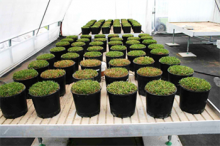Turfgrass is unique among crops in that it is the plant grown as a community. This post explores the basics of turf growing and brings six factors that must be considered to achieve well turf growth and stability.
Turfgrass is unique among crops in that it is the plant grown as a community. Grasses are perennial plants but, as opposed to other perennials such as trees or bushes, grasses are only 1-2 cm in height.
Grasses can be used in several applications including:
• Leisure: parks and gardens
• Sport fields: Football, baseball, golf etc…
• Soil protection: used as a cover crop to help prevent erosion and weed growth
Turfgrass is generally divided into two types:
1. Cool season grasses such as Bentgrass and Bluegrass do best at temperatures of 15 to 24 ºC (60 to 75 ºF) and are generally not subject to winterkill. Shoot growth begins with a strong spring flush followed by a slowing in the summer and a renewal of growth in the fall.
2. Warm season grasses, driven by temperature and light, such as Bermuda grass, prefer temperatures of 27 to 35 ºC (80 to 95 ºF). If the temperatures drop to 15C or lower they stop growing and if the temperatures fall close to 0oC they become dormant.
Grass plants spread using rhizomes and stolons
• A rhizome is an underground shoot that grasses use to produce new plants.
• A stolon is a horizontal above ground shoot that grasses to use to produce new grass plants.
Stolons are crucial because the fact that they are underground means that they are protected from the frost. Therefore, grasses growing in cold climates can use stolons to regenerate in the spring when the weather warms up. Some plants produce rhizomes or stolons and some produce both.
When growing turf, the ideal is to have a stable population of plants, made up of the same type(s) of grass plant and growing at the same rate. Six factors must be considered to achieve stability:
1.Water management
2.Initial grass composition
3.Nitrogen management
4.Resilience and resistance
5.Maintenance regime
6.Intensity and type of use
All year-round maintenance of turf is a complicated challenge. A nutritional plan should take in consideration various factors such as:
• Climate
• Purpose
• The growth/accumulation and quality curves
• The need of the plants
Haifa’s nutritional concept for turf is based on the understanding that growth requirements are specific and dynamic: they vary from one turf species to another; they depend on growth conditions and change during the year. The concept customizes nutritional plan to the very needs of your turf, and couple it with the special benefits of Multicote™ Turf controlled release fertilizers and MultiVerdo™ potassium nitrate.





